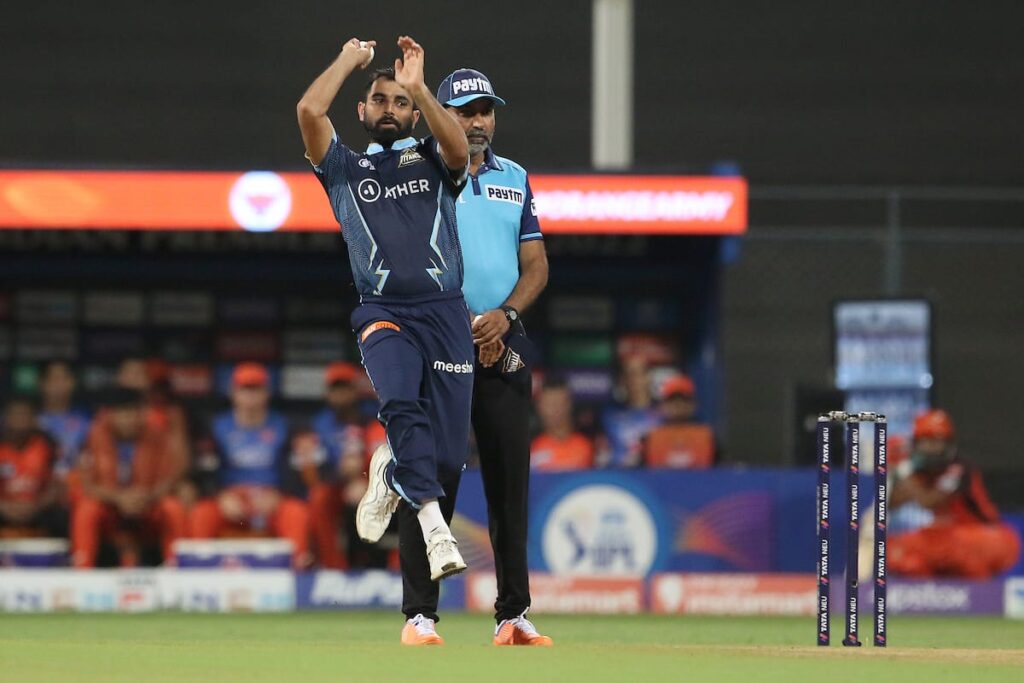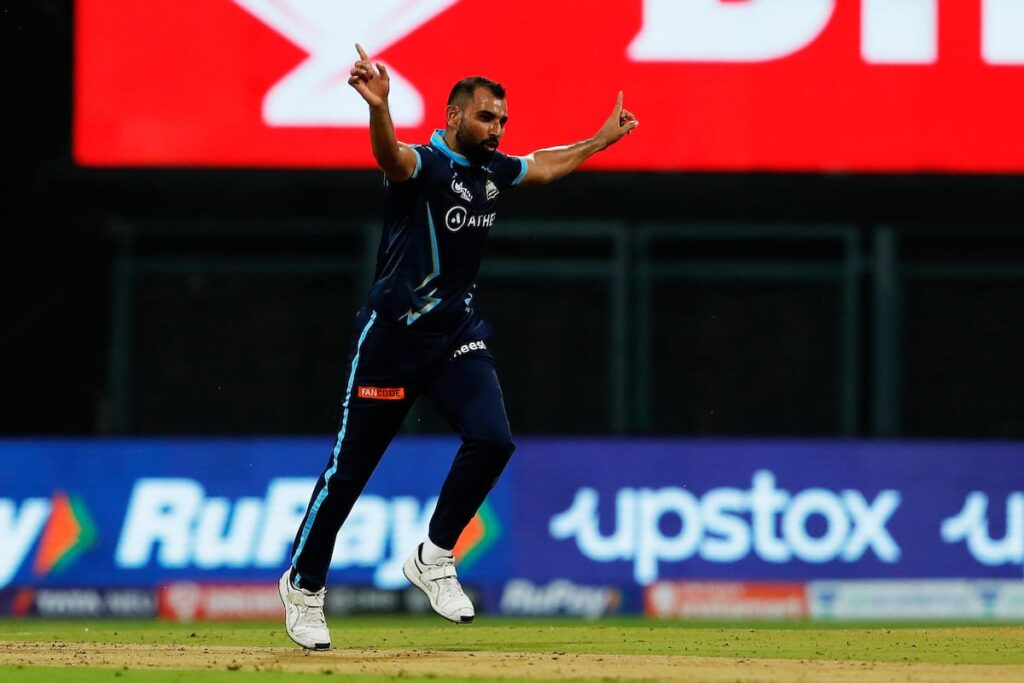
Years from now, it could well be a trivia question. Who took the last wicket in Sachin Tendulkar’s final Test, triggering waves of emotion and pride so huge that most of will never see anything like it again? The answer is, of course, Mohammed Shami, who flattened Shannon Gabriel’s middle stump with one that swung back in – the same sort of delivery that had first made his name in Kolkata cricket circles.
It was just Shami’s second Test, and in nearly a decade since, he has added only 61 more appearances in the longest format of the game. Across formats, he has now taken 411 wickets for India, and it might have been so much more but for his tendency to put everything on the line.
There are players who need barely a niggle before they rule themselves out, who spend more time on treatment tables than they do on the pitch. Central contracts and lucrative deals in franchise-based T20 leagues allow them that luxury as well. But for Shami, whose career has been defined by struggle, such thoughts are almost alien.
Had he been a pragmatic man, Shami would have looked to the future and opted for surgery once he started struggling with his left knee during the 2014-15 season. The decision to carry on, and pound in to bowl on Australian pitches as hard as granite, came at a cost. He took six wickets apiece in Test matches in Melbourne and Sydney, and was outstanding while taking 17 wickets in the World Cup that followed right after.
KKR Need Collective Lift Against High-Flying Gujarat
India had reached the 2015 semifinal without losing a game, and with Shami taking at least two wickets in every outing. But with Australia lifting their game and India unable to respond, the caravan ground to a halt in Sydney. For Shami, who went for 68 runs in a wicket-less spell, the halt was much more sinister.
Having braved the pain for months, he had no option but to go for surgery. Even for the man on the street, it’s a scary thought, a major procedure that doesn’t always give the results you hope for. For a professional athlete, it’s terrifying. So many fast-bowling careers have been severely interrupted or even ended by knee, shoulder and back surgeries from which recovery can take up to a year.
Shami didn’t play for India for another 15 months. He wouldn’t don the ODI shirt for more than two years, watching from the sidelines as India lost the Champions Trophy final to Pakistan in June 2017. Two years later, again in England, he took 14 wickets in the four World Cup games he played. That included a five-for against England, the eventual champions. But come the semifinal against New Zealand at Old Trafford, Shami didn’t play. And once again, India, who had topped the league table, fell at the penultimate hurdle.
Shami’s IPL journey has seen as many troughs and crests. With Kolkata Knight Riders, he played just three matches in 2013. Then, after he had made waves at international level, came the big-money move to Delhi Daredevils. But his injury-interrupted years there took in just 32 games from 2014 to 2018. There were only 20 wickets, and an economy rate of 9.17 suggested that he struggled to balance his attacking instincts with the need to keep things tight.

By then, there was a risk of Shami being seen as a red-ball bowler, someone whose all-or-nothing approach didn’t lend itself to the damage-limitation philosophies that many captains and coaches prefer in white-ball cricket. That changed when he moved to Punjab Kings, with, first, Mike Hesson and then Anil Kumble in the head-coaching role. In his three years there, Shami couldn’t lead the team to the playoffs, but he learned to balance the wicket-taking instincts with the need to build scoreboard pressure.
There were 58 wickets in three seasons, at a vastly improved economy rate of 8.25. He was often lethal in the Powerplay, combining pace and new-ball movement, and learned to mix things up more at the death. It was only because of Punjab’s desire – after years of failure – to start from scratch that he was let go before the 2022 season.
Few knew what to expect when Gujarat Titans took to the field at the start of the 2022 campaign. Previous expansion teams like Pune Warriors India and Kochi Tuskers Kerala had faced multiple issues off the field, and struggled on it. But Gujarat adapted just as well as Shami had to Test cricket those years earlier, when he took 9 for 118 on debut at Eden Gardens.
Shami was a revelation with the new ball, taking 11 Powerplay wickets at a superb economy rate of 6.62. To put that into perspective, Trent Boult – whose reputation has been built on immediate breakthroughs with the new ball – took 10 Powerplay wickets while going at 6.95 an over. He also chipped in with eight wickets in the slog overs, at an economy rate (9.63) not too different from that of a death-overs specialist like Harshal Patel.
This blueprint has been followed again in 2023, with Gujarat having the best Powerplay economy rate (7.3) of any team. KKR, who they play next, have seen their bowlers go at 9.9 runs an over in the same phase. And of the 11 Powerplay wickets that Gujarat have taken – only Bangalore, with 18, have more – Shami has taken six. Only Mohammed Siraj and Boult have more (7), and Shami’s economy rate of 6.6 in the Powerplay is bettered only by those two, and the pair of Ishant Sharma and David Willey, who haven’t played a full complement of games.
Gujarat’s bowlers, led by Shami, have also been responsible for two of the three lowest Powerplay totals this season – Rajasthan’s 26 for 2, and Mumbai’s 29 for 1. Gujarat have also not leaked runs at the death, and the team’s economy rate in the slog overs (9.5) is behind only Rajasthan (9.0) and Chennai (9.2). And all this in a season when Rashid Khan, Gujarat’s spin talisman, has been more expensive than ever before.
Eden Gardens, where he took his first steps as a first-class cricketer in November 2010, has been a very happy hunting ground for Shami in Tests, with 23 wickets from four matches. It’s a different story in the IPL, where his three wickets there have come at an awful economy rate of 11.5. The main reason for that has been Andre Russell, who has tonked him for 96 runs in just 40 balls.
Russell’s season has yet to ignite, but there’s little doubt that Kolkata’s coaching staff will assess their options if Shami strikes early. Gujarat and Shami are once again sitting pretty near the top of the table, with the playoffs very much in view. For Russell and Kolkata, almost every game from here is a must-win. It really could be the spiciest of contests, and only a fool would write off Shami, who left his comfort zone as a teenager and has strived to make batters uncomfortable ever since.



